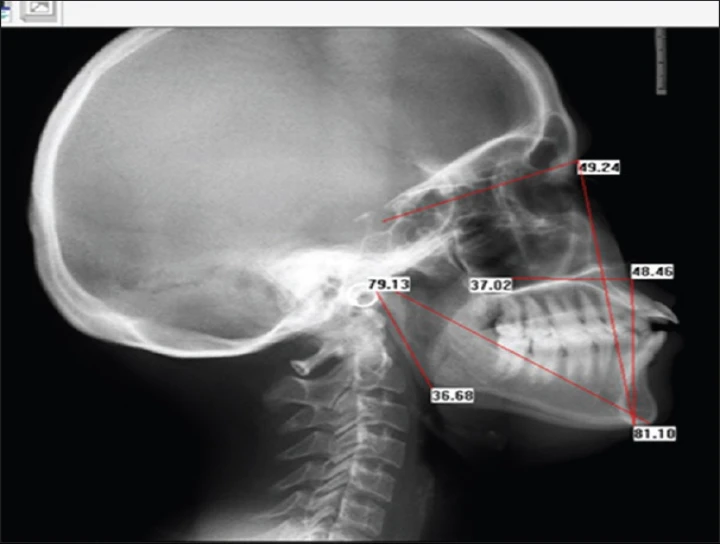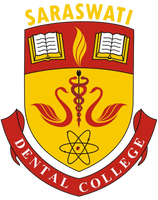
Gender determination from digital lateral cephalograms is a specialized field within forensic and orthodontic imaging. It involves analyzing skeletal and dental features from lateral cephalometric radiographs to determine an individual's sex, particularly in populations where other methods are not feasible. Here's a detailed overview of how this process can be applied to adolescent and adult cohorts from a Pondicherry population:
### Overview of Digital Lateral Cephalogram
**Digital Lateral Cephalogram** is a type of radiographic imaging that captures a side view of the head, including the skull, facial bones, and dental structures. It is commonly used in orthodontics for diagnostic and treatment planning purposes but can also be useful for gender determination due to its detailed depiction of skeletal features.
### Gender Determination from Cephalometric Radiographs
**Key Features Analyzed:**
1. **Skeletal Morphology:**
- **Maxillary and Mandibular Dimensions:** Differences in the size and shape of the maxilla and mandible can indicate gender. Generally, males may exhibit more robust skeletal features compared to females.
- **Facial Angle and Profile:** The angle and profile of the facial features, including the nasion, sella, and menton, may show sexual dimorphism.
2. **Dental Characteristics:**
- **Dental Arch Shape:** The shape and dimensions of the dental arch can vary between genders. For example, male dental arches may be broader and have different curvature compared to female arches.
- **Teeth Size and Alignment:** Differences in tooth size and alignment can also be considered, though they are less pronounced than skeletal differences.
3. **Landmarks and Ratios:**
- **Cephalometric Landmarks:** Specific landmarks, such as the Gonion (Go), Menton (Me), and Gonial Angle, are measured. Ratios and angles derived from these landmarks can help distinguish between male and female cephalometric patterns.
- **Sexual Dimorphism Indices:** Statistical indices and algorithms can be used to analyze cephalometric data and determine gender probabilities.
### Study Considerations for Pondicherry Population
1. **Population-Specific Data:**
- **Regional Differences:** The cephalometric norms and gender differences may vary by population. Therefore, it's essential to establish local norms for the Pondicherry population to improve accuracy.
- **Cultural and Genetic Factors:** The Pondicherry population may have specific genetic and cultural factors influencing cephalometric features. Tailoring the analysis to these local characteristics is crucial.
2. **Sample Selection:**
- **Adolescent and Adult Cohorts:** Ensure the study includes a representative sample of both adolescents and adults to account for developmental changes and maturation effects on cephalometric features.
3. **Methodology:**
- **Measurement Techniques:** Use precise and standardized methods for measuring cephalometric landmarks. Digital software tools can aid in accurate and consistent measurements.
- **Statistical Analysis:** Employ statistical methods, such as discriminant analysis or machine learning algorithms, to analyze cephalometric data and determine gender. Validation of these methods using a known gender sample is necessary.
4. **Ethical Considerations:**
- **Informed Consent:** Obtain informed consent from participants, ensuring they are aware of the study's purpose and their rights.
- **Privacy:** Ensure that personal data is anonymized and kept confidential.
### Practical Applications
1. **Orthodontics and Forensic Science:**
- **Treatment Planning:** Accurate gender determination can assist in personalized orthodontic treatment planning.
- **Forensic Identification:** In forensic cases where traditional methods are unavailable, cephalometric analysis can provide valuable supplementary data for gender identification.
2. **Research and Clinical Practice:**
- **Data Interpretation:** Understanding gender-specific cephalometric variations helps in refining diagnostic criteria and treatment approaches.
- **Educational Purposes:** This research can be used for educational purposes to train dental and orthodontic professionals in gender determination techniques.
### Conclusion
Determining gender from digital lateral cephalograms involves analyzing specific skeletal and dental features that exhibit sexual dimorphism. For a study involving an adolescent and adult cohort from Pondicherry, it is crucial to establish region-specific cephalometric norms and apply accurate measurement and statistical techniques. This approach has applications in orthodontics, forensic science, and clinical practice, providing valuable insights into gender-specific characteristics of the population.


No Any Replies to “Gender Determination from Digital Lateral Cephalogram for an Adolescent and Adult Cohort from a Pondicherry Population”
Leave a Reply